Group test: What’s the best room correction software?
In theory, these intelligent apps compensate for suboptimal acoustics, helping you make mixes that translate better. But does the science match up to reality? We test the industry’s best and see which delivers the goods.
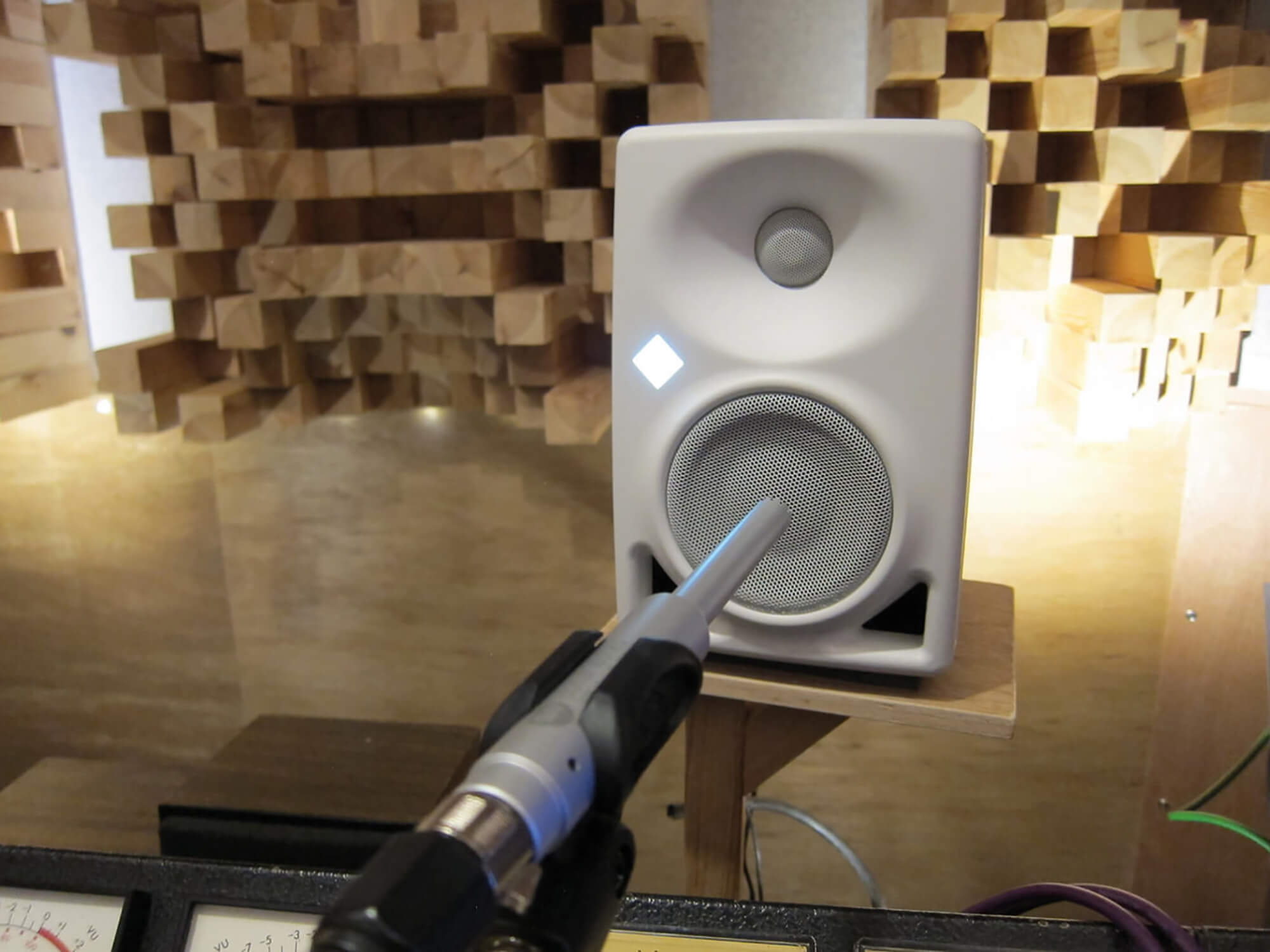
Ever since monitor speakers were first placed in a room for audio-production purposes, people have employed equalisers to compensate for what they perceived as impediments to a clear sonic picture. Unfortunately, analogue equalisers introduce phase shift, a frequency-specific delay, and this can make matters worse. Wiser money is put into in-the-room acoustic solutions but these are not always possible. There’s little space for bass traps, for example, in rented rooms and temporary accommodation.
Digital filters and equalisers provide audio solutions due to their capability to operate without introducing significant phase shift, which is why you’ll see some processors refer to linear or minimum phase. To achieve linear phase (time alignment at all frequencies), they add overall delay, within which the individual delays of discrete frequency bands can be adjusted.
Room-correction software can take measurements from various points in a room and assess how the amplitude and phase shift of discrete frequency bands compare before and after exiting a monitor system. The resulting map or profile can be used to create compensatory EQ curves and phase shifts. That’s the idea, at least.
Fantastic four
We’re using four room-correction software products as part of our group test: IK Multimedia ARC System 3, Sonarworks Reference 4 Studio Edition, Dirac Live and Waves TRACT. We test ARC 3 with the MEMS measurement microphone it’s supplied with, while the others were set up using Sonarworks’ XREF 20 microphone. The XREF mic is supplied with a serial-number-specific calibration file that can be downloaded for use in other products, in this case TRACT and Dirac Live.
The group test is carried out with a pair of Neumann KH 80 DSP 2-way active nearfield monitors. The iPad app NeumannControl controls the monitors’ DSP features but we don’t use that for our tests. Instead, we test the app separately. The measurement mics are recorded through a Focusrite ISA828, the most transparent preamp in our studio, and the AD conversion comes via an Antelope Audio Orion 32 interface. The monitors are fed with a Lavry DA10 converter via a Mackie Big Knob for volume control.
The tests are made in a professional control room with bass trapping/resonant absorbers and wideband absorbers built into the walls, and quadratic diffusers behind the monitors. The room is 30 cubic metres – small to medium by modern standards (they’re all shrinking!). It’s a space we’ve used for more than six years, and are well accustomed to its acoustic quirks. The monitors are set up above the meterbridge of a mid-size mixing desk, a 1970s Midas PR, which adds some low-mid acoustic wrinkles for the software to deal with.
Solution 1: IK Multimedia: ARC System 3
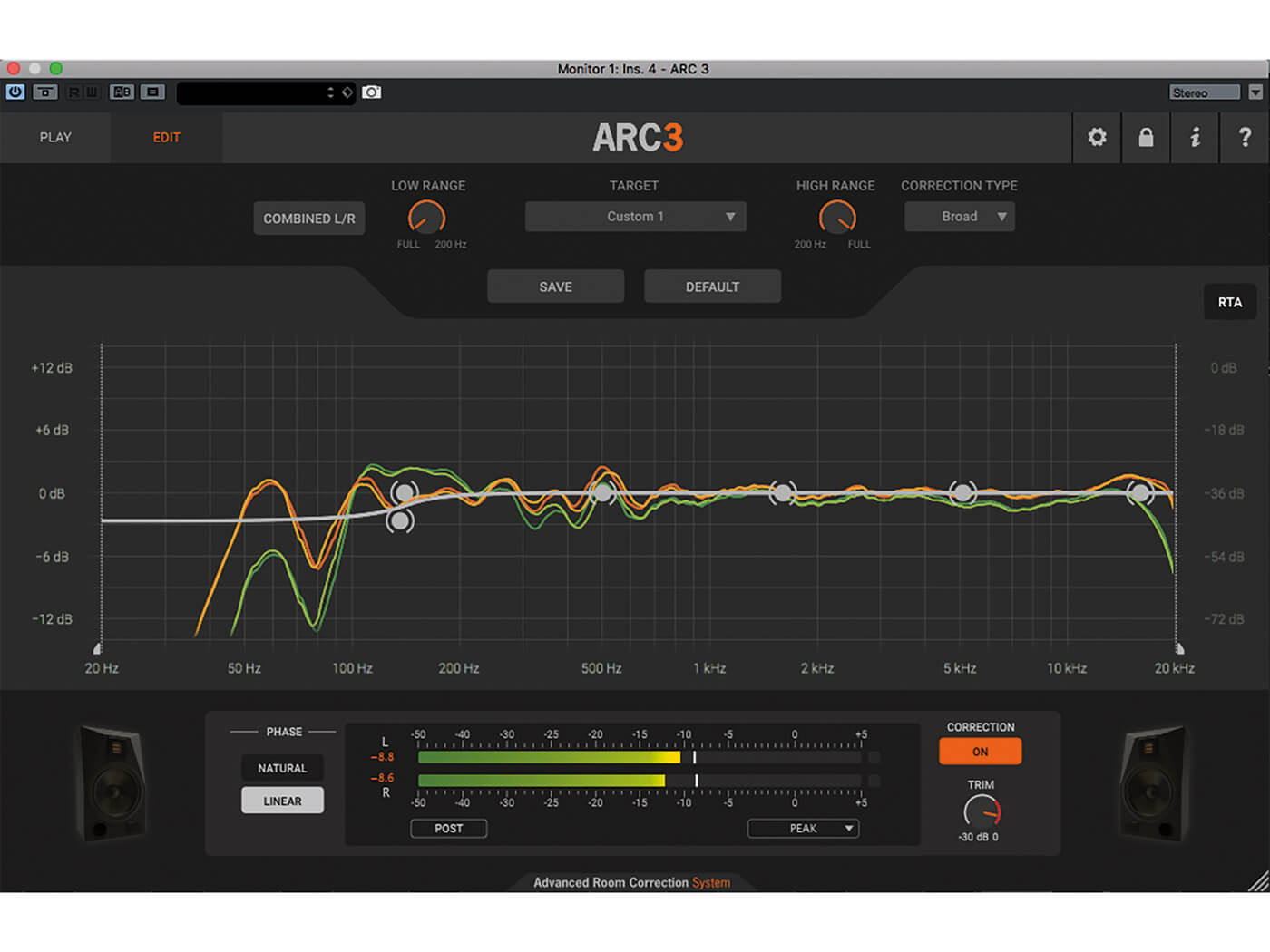
(£110, £135 with MEMS microphone)
ARC System 3 includes a plug-in (AU, VST2/3, AAX) and a standalone calibration app. IK Multimedia also supplies its own MEMS measurement microphone for an extra £25 or so, though any measurement mic can be used, as its calibration file can be easily loaded into the process.
The calibration app walks us through the setup and measurement effortlessly in about 20 minutes. This involves setting up the mic in the listening spot – where your head usually is – with measurements taken from sine-wave sweeps played through the monitors one at a time. The mic is then moved to 20 other spots for measurements, all dictated clearly by the app. Once this slightly boring process is over, you have to complete a simple name and save of the measurement profile and you’re onto the correction stage.
The saved profiles appear in the plug-in and can be fine-tuned via a selection of well-curated tools. There are preset profiles, four custom and one flat, that you can flip between as necessary. These can be used for adjusting correction ranges (for example, low end only), tilting curves via the 6-band EQ, and defining the accuracy/smoothing per octave. The user can control the output trim too, as any compensating boost will eat away at your headroom, as well as latency. The options are Natural (low) and Linear (2,100 samples, 48ms at 44.1kHz). Here, it’s a trade-off between accuracy and latency.
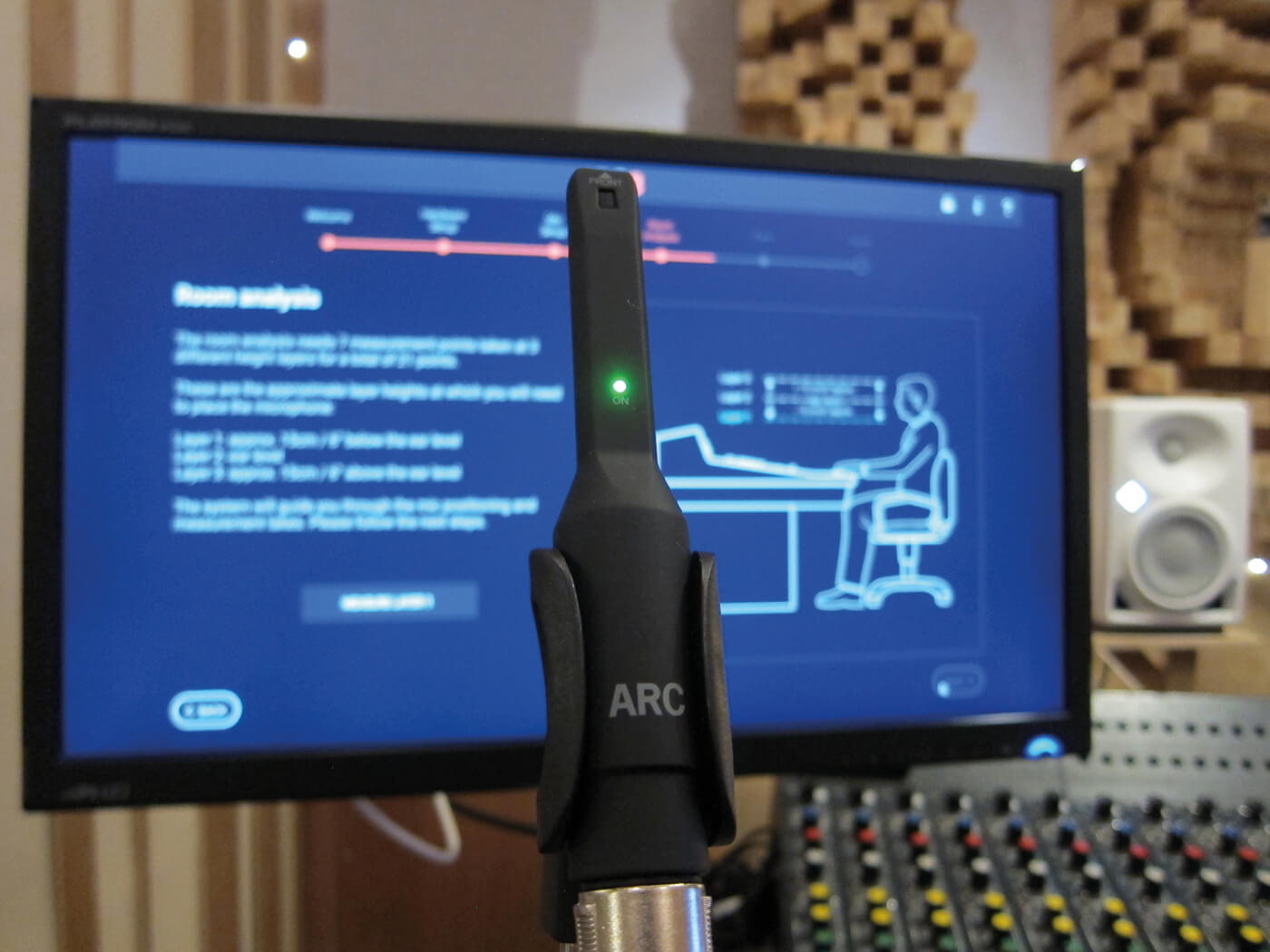
The effect of ARC is immediate, and it ably corrects the shortcomings of the monitor/space relationship. The low-end compensation is a little too much for our ears, so we introduce a low-shelf cut. After this, everything feels smooth, with the upper range nicely crisped up.
Virtual Monitoring is another useful feature. This set of adjustment curves mimics other playback systems.
Solution 2: Dirac Live For Studio
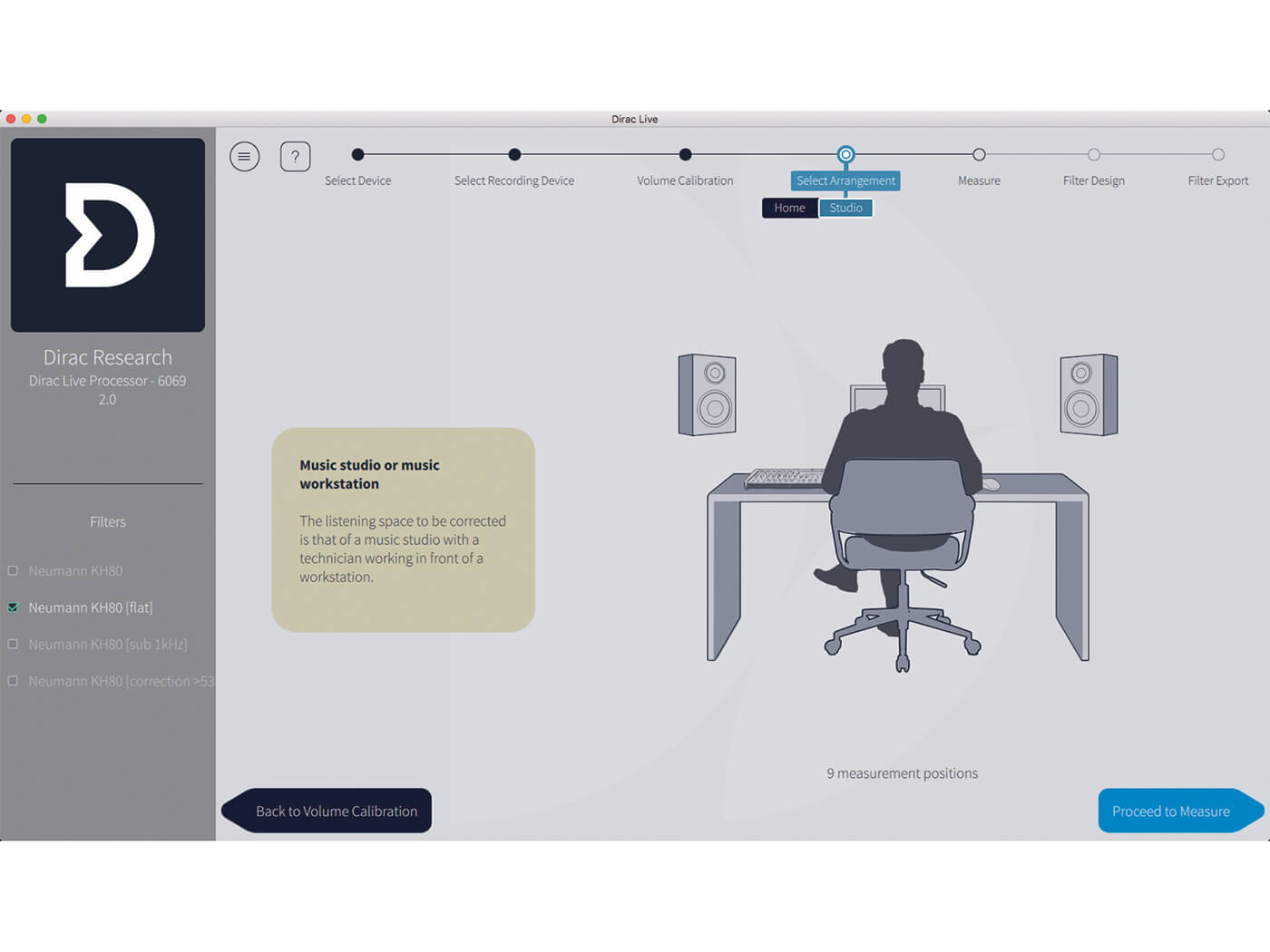 (£270 stereo, £390 multichannel)
(£270 stereo, £390 multichannel)
Dirac Live was primarily developed for hi-fi listening environments, with its main stereo product integrating directly with a range of high-street brands, such as Arcam, NAD, JBL. The more expensive product takes the calibration system and ports its measurements into plug-in form for DAWs (OSX/Windows, AU, VST2/3, AAX) in both stereo and multichannel formats. There is no bespoke measurement mic but, as with all four products on test here, it can be loaded with the calibration profiles of other mics, such as those by Earthworks, Audix and Beyerdynamic.
The Dirac Live calibration app walks the user through the steps from monitor volume and mic-preamp level to measurement-mic position. It requires the plug-in to be running in a DAW during measurement but that’s not a major hassle. Using sine-wave sweeps, we take nine measurements around the central listening spot. The procedure takes about 20 minutes. The resulting response profile can be adjusted and stored in the plug-in.
The adjustments come in the form of user-definable breakpoint-style EQ curves and upper/lower limit points for the corrected frequency range, as you may want to leave the subs or high end unaffected. The plug-in provides eight slots that can be deleted and overwritten as necessary. Only the output attenuation and preset selection are live controls, so this is not a complex interface.
With no adjustments to the initial profile, the DAW mix we were running becomes instantly clearer and more balanced across the audible range, with the low and low-mids showing the most change in clarity. We try a number of alterations to the profile but the flat one remains unbeatable. Simple.
Solution 3: Sonarworks Reference 4 Studio Edition
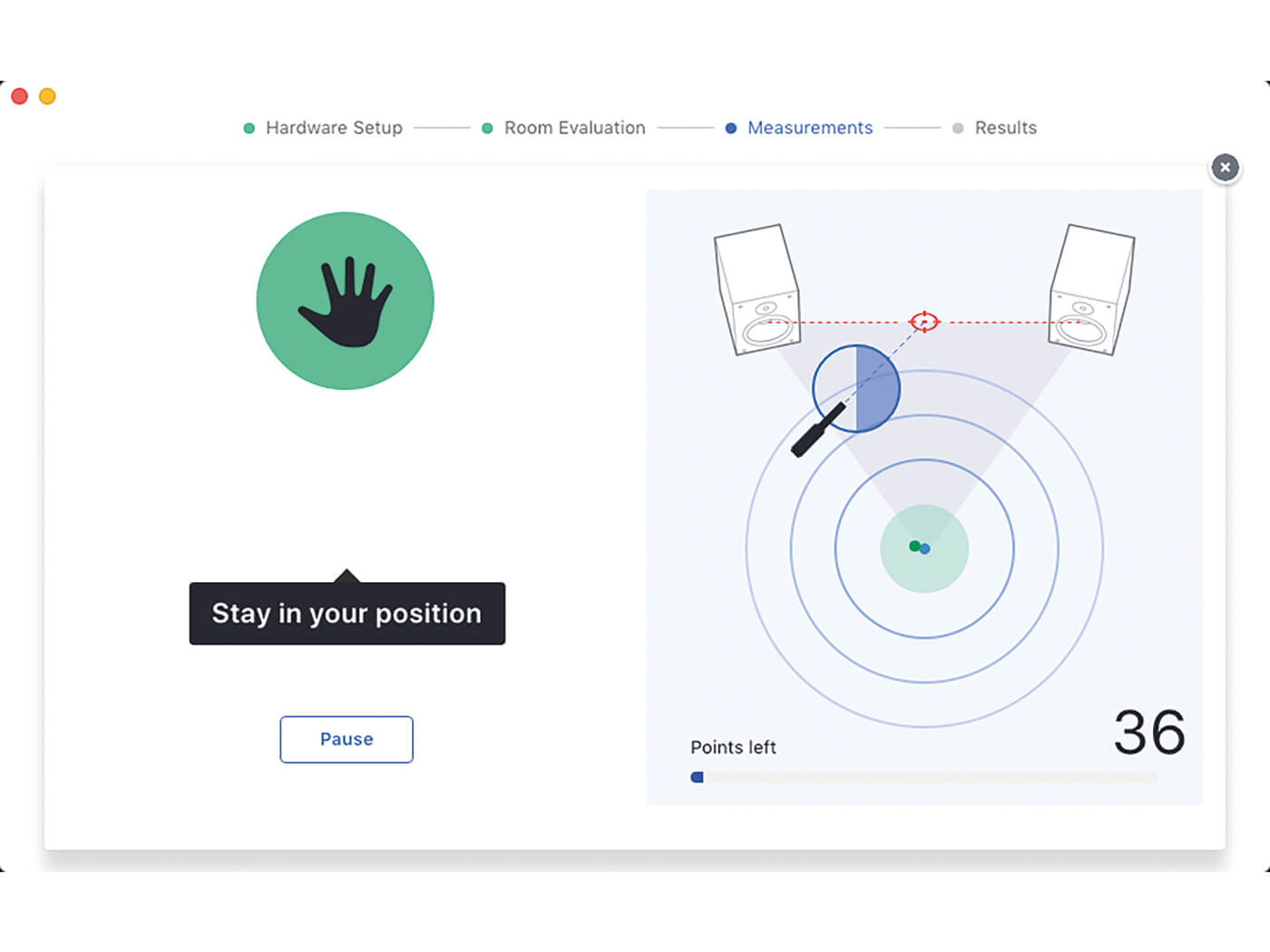
(£230 software, £270 with XREF 20 microphone)
Reference 4 Studio Edition comes as a calibration app (Reference 4 Measure), a set of plug-ins (OSX/Windows, AU, VST2/3, AAX) and Systemwide, a program that can apply the correction profiles to any attached audio devices. The Sonarworks measurement mic XREF 20 adds about £40 to the price but that’s a small sum for those without such equipment.
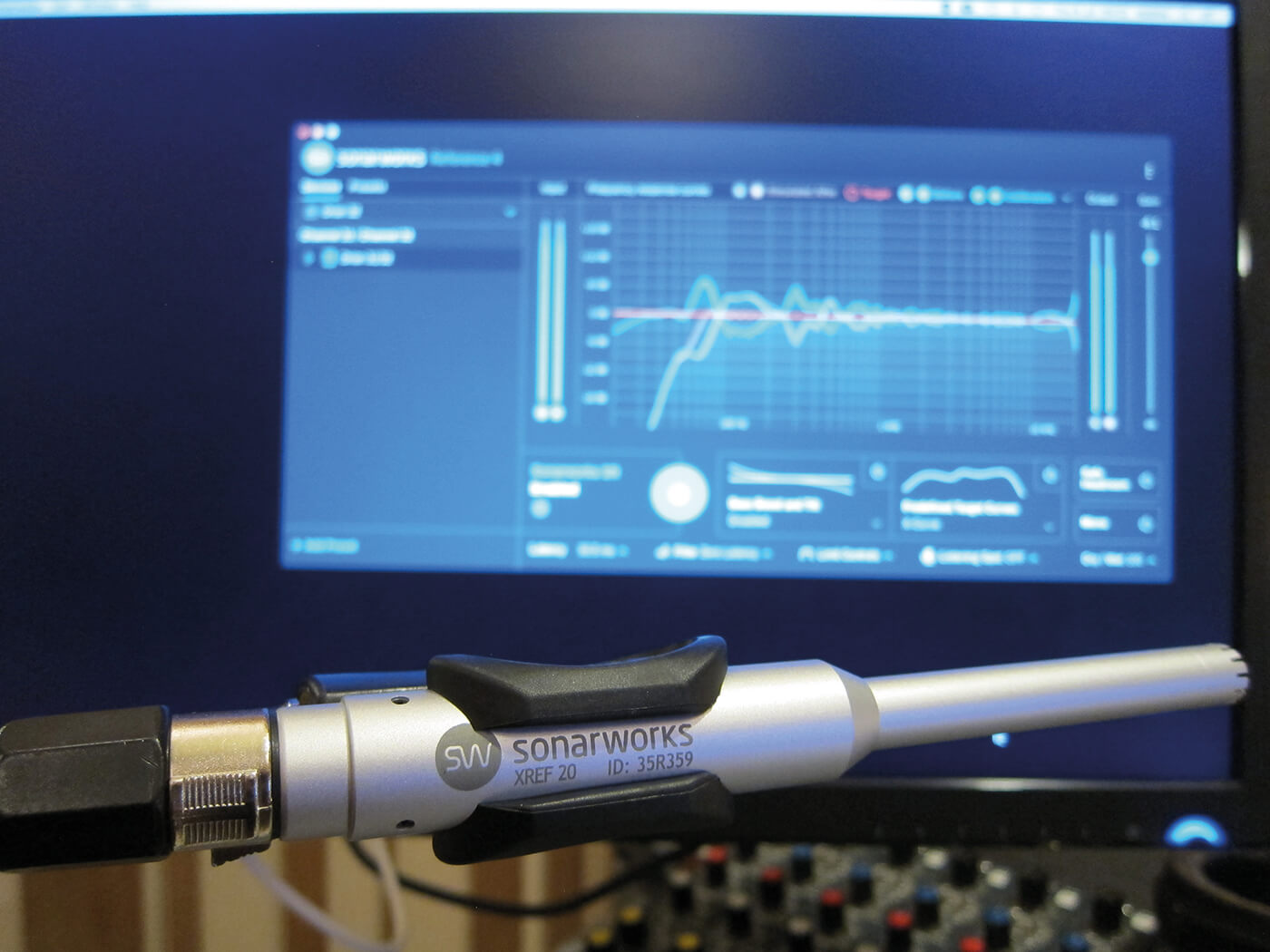
Reference 4 Measure is a breeze to use, from its volume and preamp-level settings to its measurements. The process sees the user holding the mic wherever the program dictates – close to the monitor, between the monitors, etc – and, through the input of a few distances, it uses delay times to locate the mic position. A circle appears onscreen as chirruping emanates from the speakers and you adjust your position, mic in hand, until you’re locked in the circle when the short test signal sounds. This takes about 10 minutes and plays out like an arcade dance game for the studio-bound. The resulting profile is then labelled and stored for use in the plug-in and Systemwide app.
The plug-in and Systemwide displays contain all you need: the profile and correction curves, I/O metering, a well-balanced set of adjustment tools and an on/off button. The adjustments include bass cut and boost, and tilt (instead of the more fiddly curve-bending), plus latency and linear-phase controls, correction amplitude and frequency limiting, and alternative correction curves. It is from here that the user can also switch to a headphone-correction curve, which accesses more than 300 headphone model calibrations. The odds are that yours will be represented.
The correction profile sounds superb and a 2dB bass boost brings the low end up to where we were expecting it to be. The ability to swap to a zero-latency correction, which trades delay for some phase distortion, makes it easier to jump between tracking and mixing, instead of having to bypass the plug-in.
Solution 4: Waves TRACT
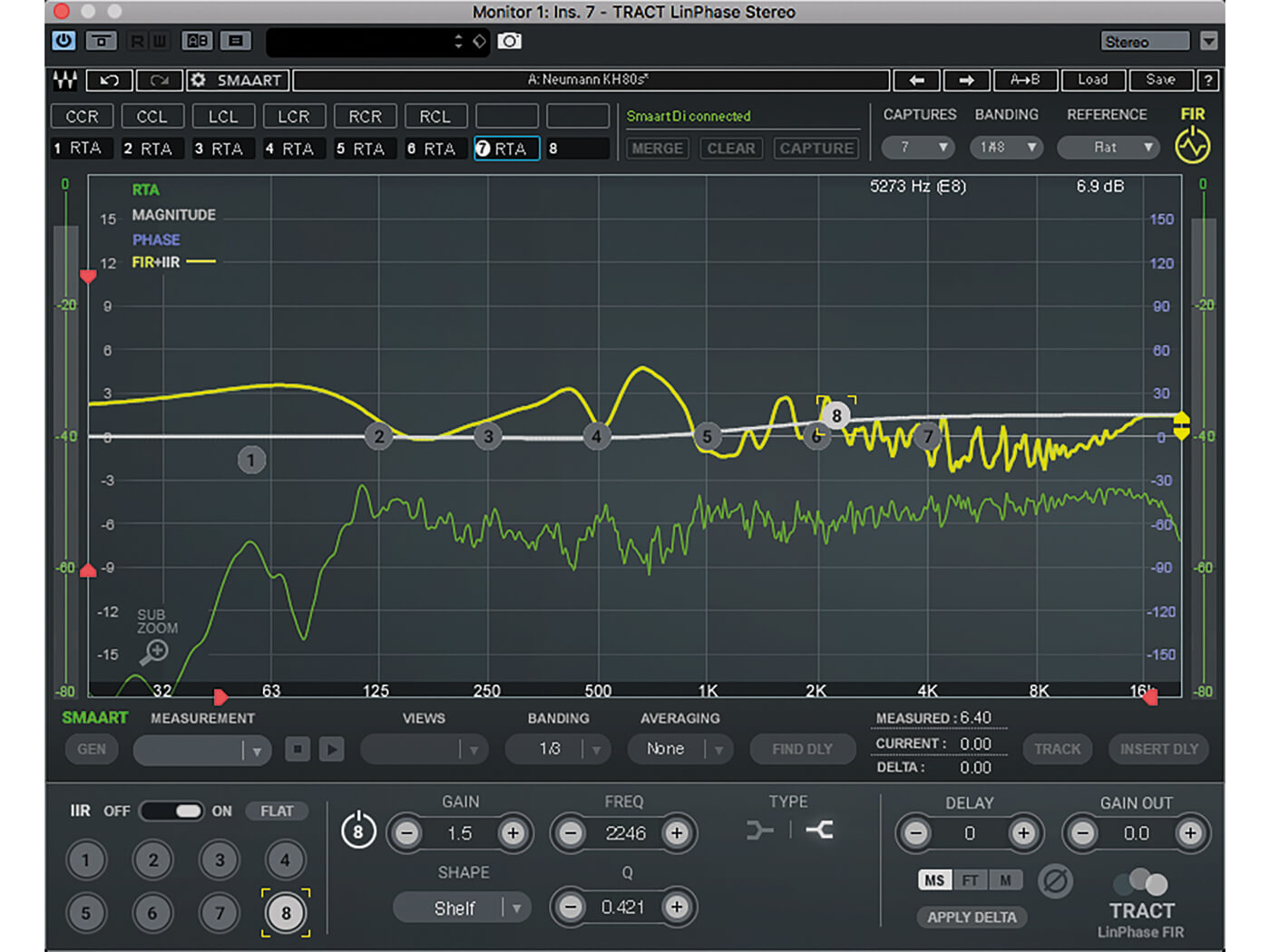
(£310, £620 with Smaart Di v2)
Waves’ Time and Response Auto-Correction Tool is aimed at live PA and front-of-house use and, as such, differs from the other products here. Waves has made great strides in the digital takeover of live sound engineering and TRACT fulfils a vital role here, from tuning PA system EQs to time/phase aligning the multitude of speaker drivers involved. TRACT is the plug-in front end of a system that uses Smaart, a third-party acoustic-measurement program that ports measurements to TRACT via an API link. Sound complicated? It is compared to the other three products but it’s also designed for a more continual measurement-and-correction cycle.
To cut a long story short (and after reading two manuals), the calibration process is smooth once Smaart and TRACT start talking to each other and the pink-noise signal begins pumping out of the monitors. It’s up to the user to define where measurements are taken, so some familiarity with acoustics is a must. The plug-in takes charge of proceedings and the RTA (real-time analyser) measurements can be stored in eight slots. For this test, we take six measurements and merge them to a seventh slot from which the final capture is made.
From a slow start, it’s not difficult to tailor the captured FIR (finite impulse response) with constraints to its frequency cut/boost and range. A hefty 8-band EQ helps fine-tune the correction. In this case, just a touch of high-shelf boost sorts things out. There is no switching for latency, so you can load either the low-latency/minimal-phase plug-in (seven samples) or the linear phase version, which adds 519 samples of latency. The latter brings more clarity to proceedings, though the former was no slouch.
Neumann Control iPad App
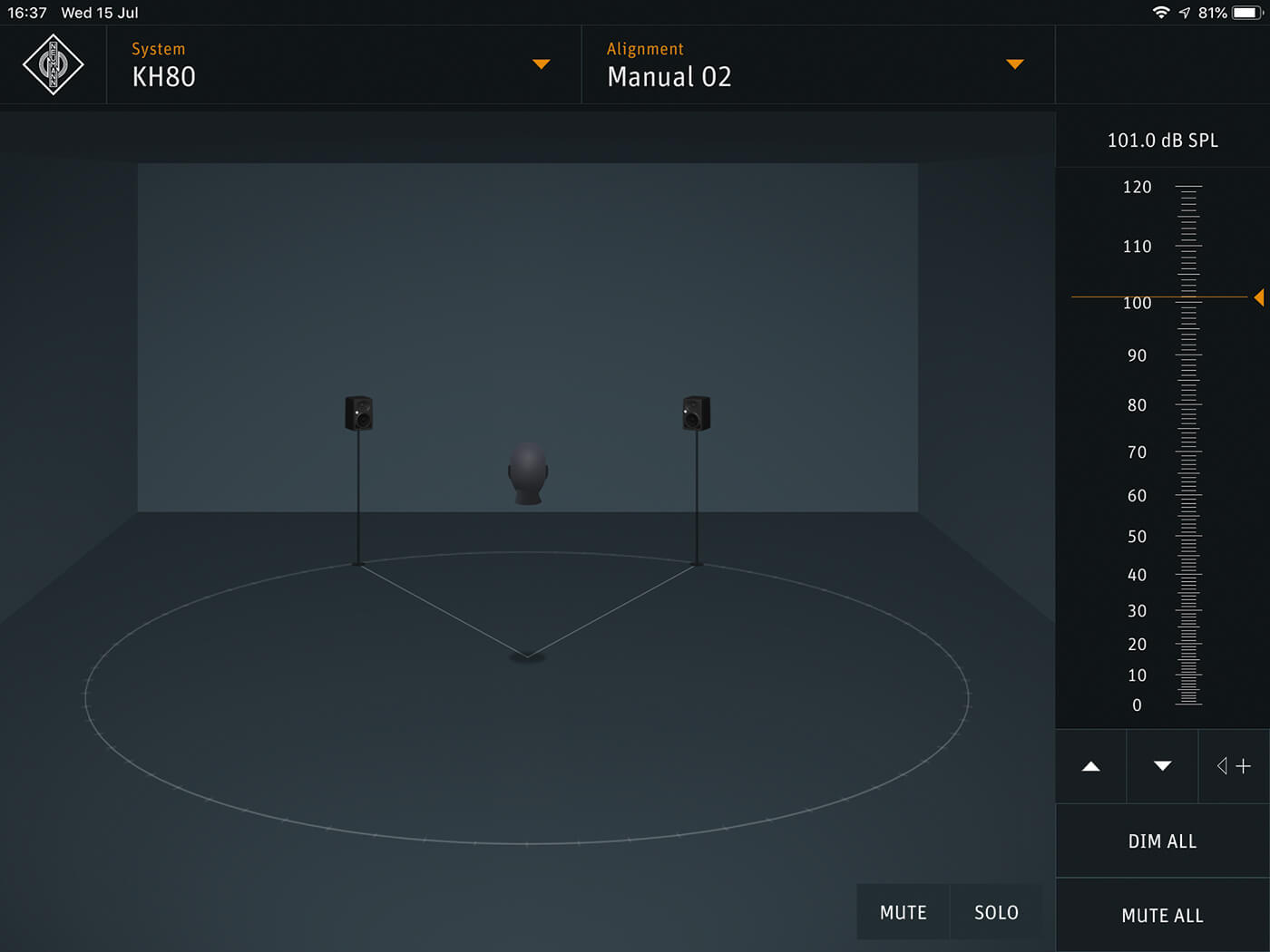
(Free app for KH80 DSP monitors)
NeumannControl addresses the KH80 DSP monitors through your wi-fi router’s ethernet connections. With a few identifying blinks of the KH80 power lights, the app can set about tuning the monitors to the room. There are two options: guided alignment and manual alignment. The former walks the user through optimal monitor positioning and, via a series of questions about the room’s dimensions, surface materials and wall-screen-desk proximity, creates a tailored output.
Manual alignment allows the user to adjust each monitor’s performance with an 8-band EQ, global high and low shelving, and individual speaker level and delay controls. Each EQ band is fully parametric with six filter types – bell, notch, high and low shelving, and high- and low-pass filter), so there’s plenty of room for fine-tuning. This relies on some prior knowledge of the room’s characteristics in relation to the monitors – for example, by way of a measurement mic and an app such as Fuzzmeasure, which we often use for acoustic testing, as well as signal-path analysis. Multiple setups can be saved and recalled using the main interface, which also provides dim and mute and level controls.
In use, the guided-alignment option makes a useful adjustment to the KH80s’ outputs. Inputting slightly different data – for example, speaker-to-wall proximity – garners audibly different results, though the more accurate the data, the better the output. The best results come from inputting corrective EQs via the manual-alignment route based on measurements we’d previously made (corroborated, within a reasonable margin, by the other products’ analyses). The end result compares well to what we achieved with the other four room-correction apps, though this is mostly with regard to the low-frequency range. From 1kHz and up, the responses are complex in terms of amplitude and phase, and it is best to either use a specialised solution – as in, the other four apps/plug-ins – or adjust gently over broad ranges, such as with a high-shelving EQ.
The correct conclusion
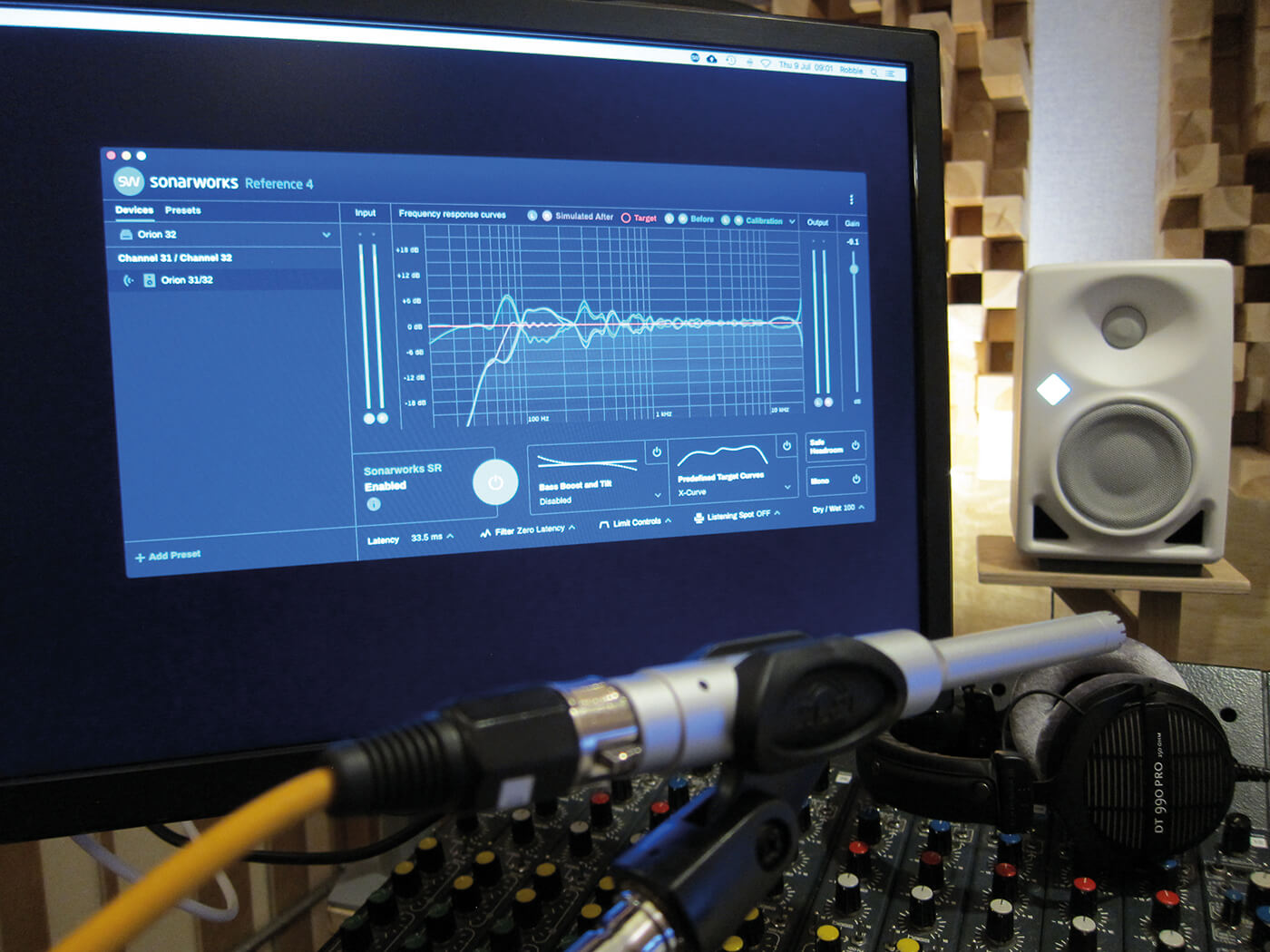
After delving deeper into the world of room-correction software, we’re struck by how long it takes to get over pre-existing learnt response curves. Working with four solutions at once may not have helped. With all four products, however, it’s obvious that the low end is where all the action is – and that’s something we were acutely aware of. The smaller the room, the more difficult it is to get the lower frequency range to sit relatively flat and, as most of us work in small rooms, affordable solutions are most welcome.
Before we consider the relative merits of these plug-ins and apps, there’s something we should note. For these tests, we worked on a mix on our own monitors. As we made our final mix decisions, we spent a little time with each room-correction plug-in, which weren’t really adjusted any further, as we felt they were working well. The decisions we made weren’t necessarily any different than they usually would be. We were, however, able to make them quicker.
So what about the relative quality and value of these four products? Waves TRACT (and Smaart) is the odd one out here, both in the way it works and its pricing. It’s an impressive piece of software that we can see being essential in a live-sound context. In studios, however, it’s too much for what should be a mostly set-and-forget measurement process.
At the other end of the pricing scale, IK Multimedia’s ARC System 3 is a veritable bargain, with or without the mic. It provides everything you need, whether in a studio, a bedroom or a series of temporary workspaces. Climbing back up the price range, Dirac Live is not a cheap option but it impressed us with the clarity that it effortlessly brought to our monitors; this one required the least amount of adjustments from us. Though the under-the-hood differences remain elusive, there is some real class going on in there.
Sonarworks Reference 4 Studio Edition strikes the balance between ARC and Dirac, being closer to the former on value (and making the ‘which mic’ question simpler) and matching the latter on eventual sound quality, as it did require a small adjustment. The Systemwide application increases its flexibility as not everything we use has a plug-in slot for monitoring (e.g. Ozone for mastering), and add onto that the excellent headphone calibration profiles, which I can vouch for on Beyerdynamic DT770s and 990s, and it’s really a hard package to beat.
For more features, click here.